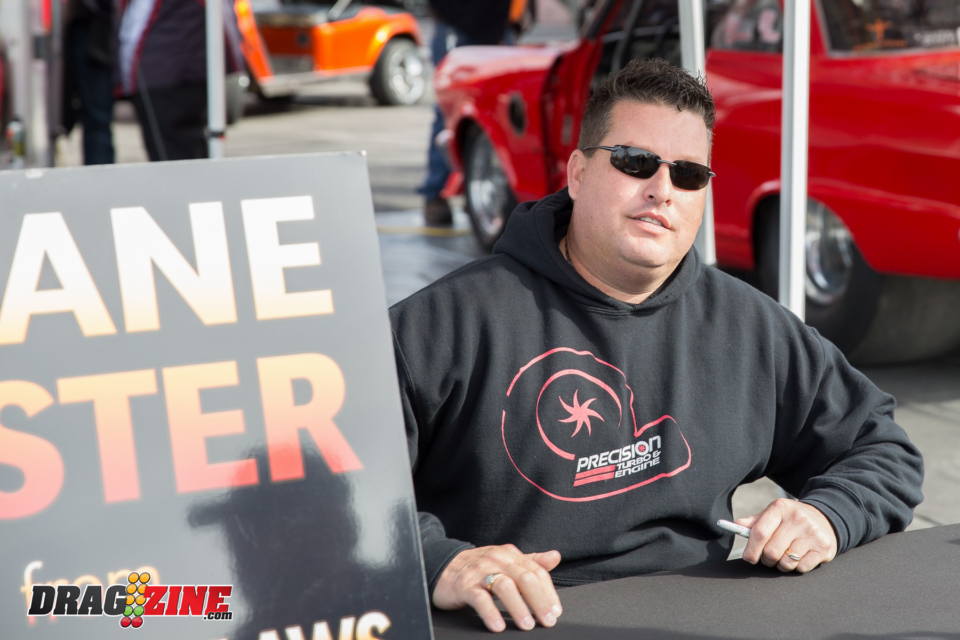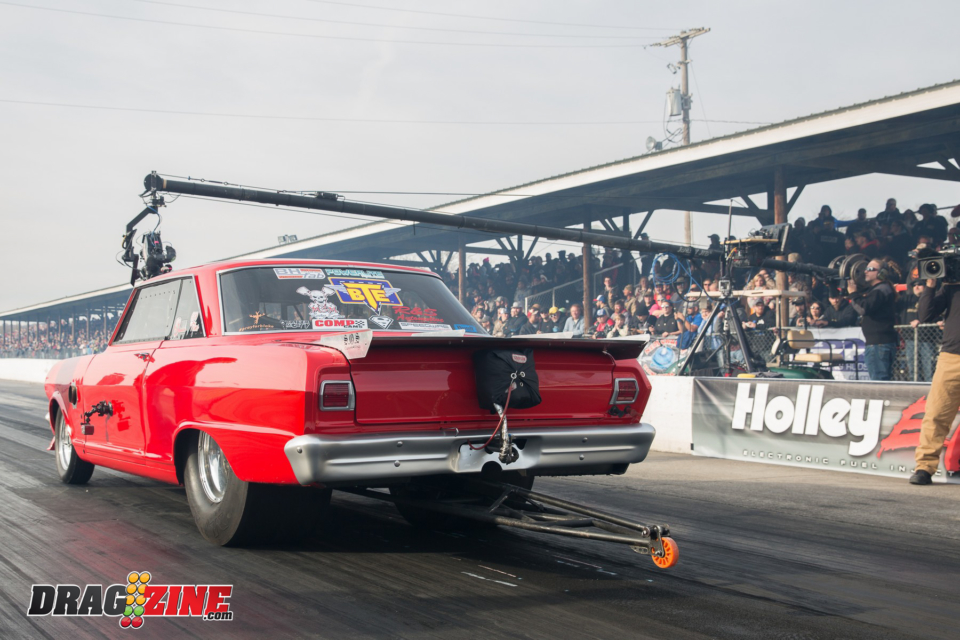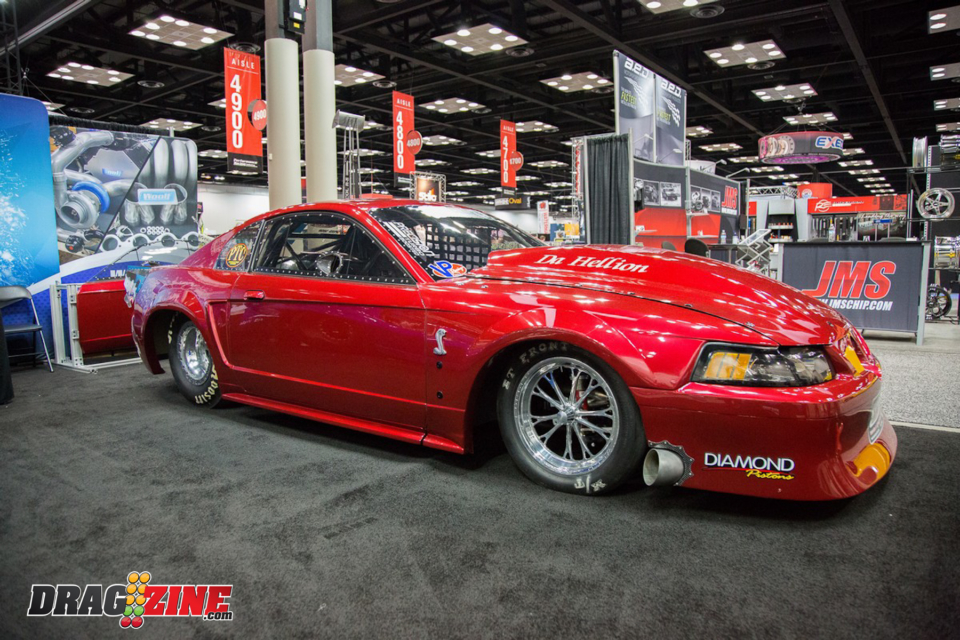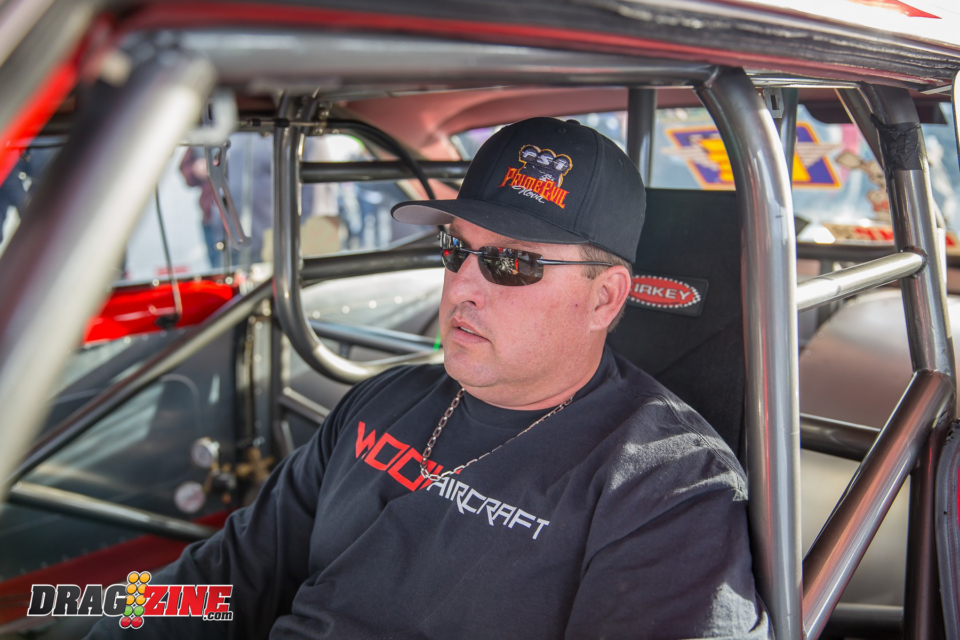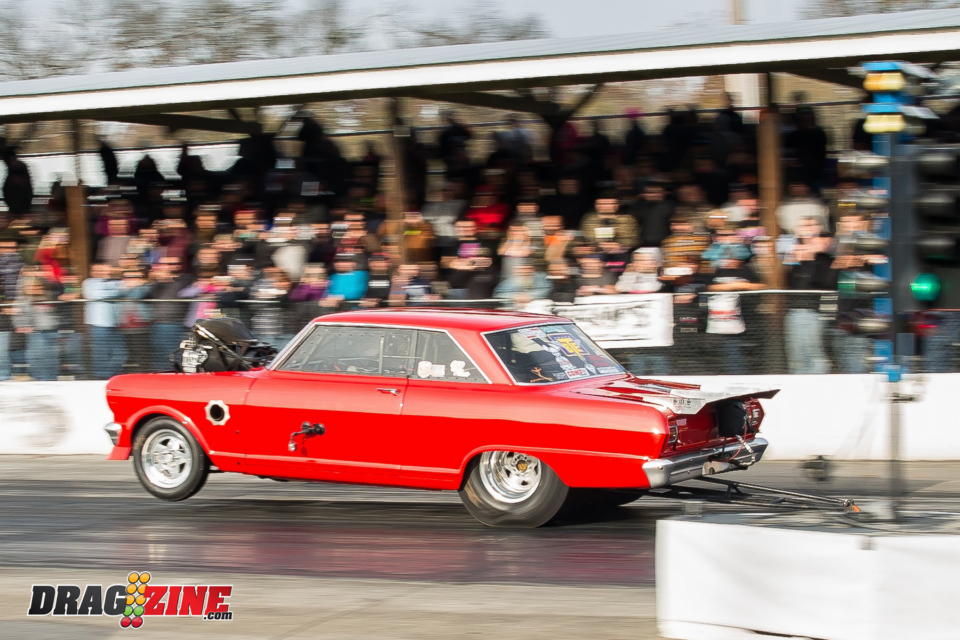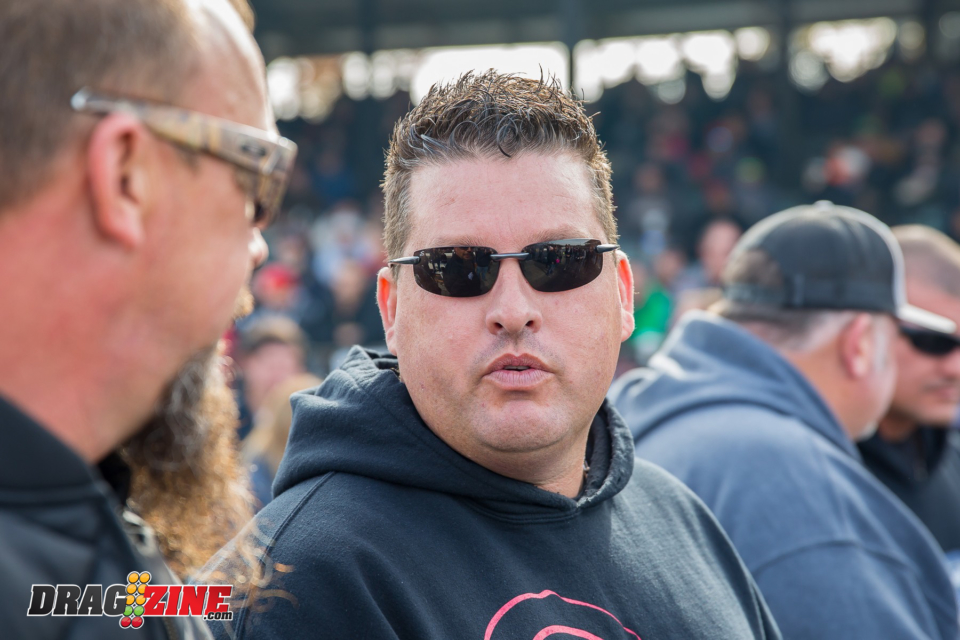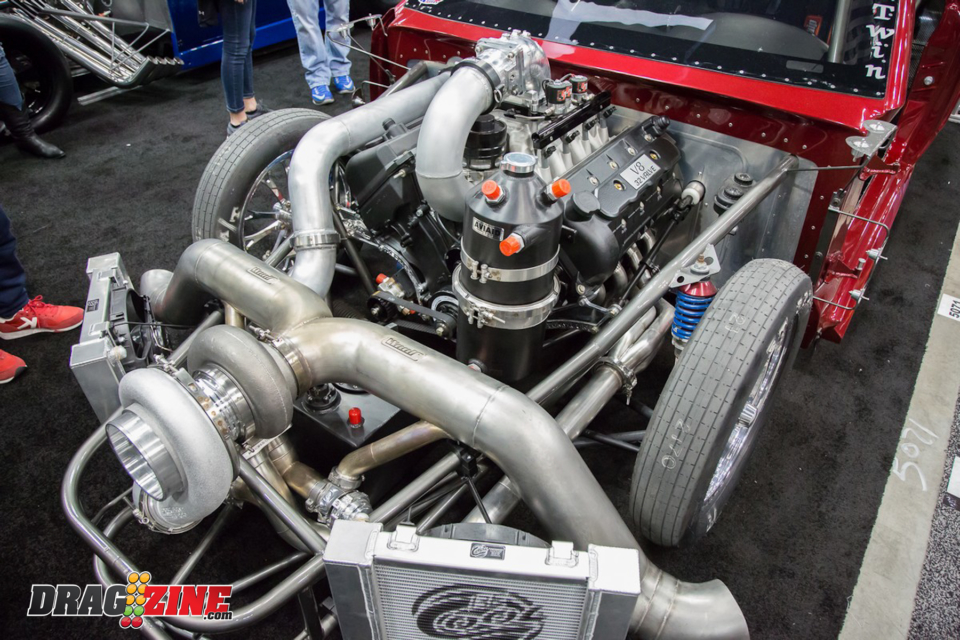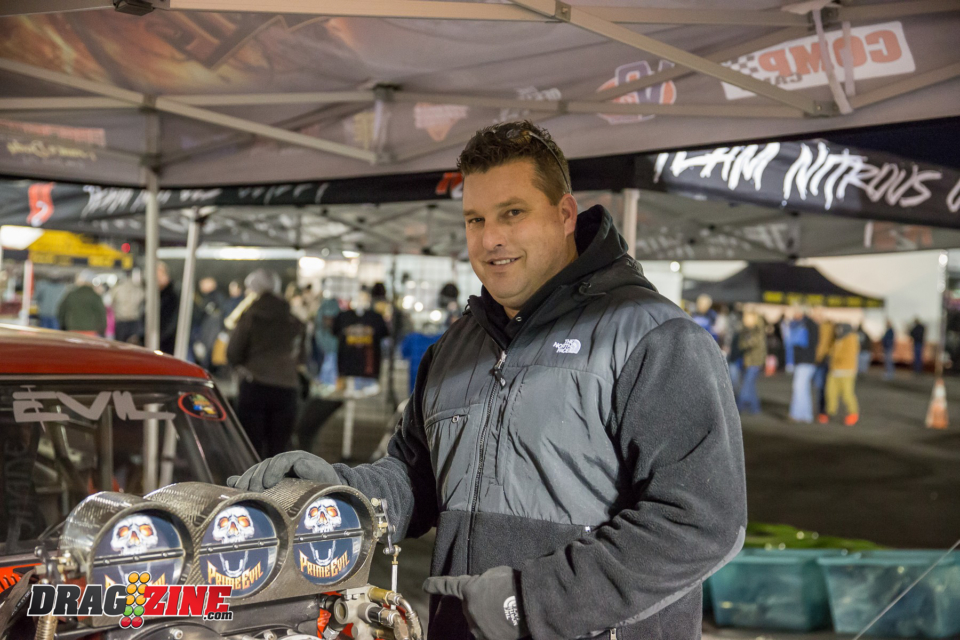In the very deepest South, far down along the Gulf of Mexico, the lawless streets of “Mexico” are closer than perhaps anywhere else in the country. And I’m not referring to the actual nation-state, here. Rather the state of mind and way of life where the next race is always just around the corner, and performance can be measured only by who you’ve outrun, not by any clock or time slip. Most often, the denizens of these streets are racers who love and live by running heads-up, first-to-the-finish line, but simply cannot tolerate the cost and inconvenience associated with formal classes or grudge events at sanctioned race tracks. And for some, once they become involved with the street scene it’s appeal never fades.
At least that’s how it went for Shane Lester — raised and still residing around Gulfport, Mississippi. Now known to the world as a central figure in Discovery Channel’s Street Outlaws: New Orleans series, and most recently in the network’s Street Outlaws: No Prep Kings offshoot (currently airing Wednesdays at 9pm ET/PT), Shane found speed on the streets early in life. Like most of us, a love for fast cars began as a child: “I saw hot rods go by and those were the cool guys. Those were the guys that I wanted to be like. That just made your heart pump, and just gave you that adrenaline rush. I’ve always had a love for old hot rods, street rods, race cars.”
The street racing scene where we’re at, in our area, it’s massive. Over towards New Orleans, at the Pad, that’s like the Mecca.
Indeed, as soon as he could buy a car himself — a Fox-body Mercury Capri made to look like a Mustang, with a 302 small-block — he made it go fast, recalling “It was souped-up as soon as I could. I was getting tickets left and right. Hell, I was 16 years old, just doing what I could with it.” And with even the wintertime temperatures rarely dipping below freezing, there’s plenty of racing to do in the temperate climate of coastal Mississippi and Louisiana.
Then, just as they do now, those streets offered nearly nonstop action. Asked to talk about street racing locally, Shane offers a simple descriptor: “Massive.” He continues, “The street racing scene where we’re at, in our area, it’s massive. Over towards New Orleans, at the Pad, that’s like the Mecca. I mean, people try to replicate it and mimic it all over the United States. We could go there tonight [and] if it’s not raining, somebody’s racing.” Even setting that spot aside, the sheer number of others in the region provided fertile ground for the growth of Shane’s street racing program.
“As I went along and could afford more I did more and more,” he explains. From a ‘70’s big-tire Camaro to more than a dozen Mustangs, if it could be made fast, Shane wanted it. With no apology he states, “A lot of people are ‘brand loyal,’ and I’m not. I love bad-ass stuff, whether it be Chevrolet, Ford, Dodge.”
And, case-in-point, Shane’s current stable of racecars includes both a 1965 Chevy Nova II (Prime Evil; big-tire) and a 2003 Ford Mustang Cobra (Da Hellion; small-tire). Da Hellion came first, bought in 2004 with around 15,000 miles on the clock, and has undergone near-continual evolution since. From a Whipple supercharger, to a Kenne Bell, to its first turbo set-up (a single 76mm) the car has kept “morphing” to stay competitive. For example, to overcome inefficiencies of a street-style air-to-air intercooler, Shane installed a Nitrous Outlet plate kit to apply a 50-shot right off the transbrake and cool intake temperatures. And of course it was then convenient to add a 150-shot down-track, as needed. Nitrous Outlet was again sourced for an Interspooler on the hot-side, soon after.
As it sits now Da Hellion is fully caged, bodied with all carbon fiber doors and lift-off front cap from Motor City Solutions, and motivated by the pairing of a Pro Mod 94mm turbo and a built 4.6-liter modular motor. The second car in Shane’s street racing arsenal is, however, quite a bit different…
A lot of people are ‘brand loyal,’ and I’m not. I love bad-ass stuff, whether it be Chevrolet, Ford, Dodge.
Prime Evil is a back-half, big-tire 1965 Chevy II Nova, acquired around 2008. It’s distinctly old-school silhouette is anchored by the PSI twin-screw supercharger (in Shane’s words: “It’s like a Top Alcohol-style supercharger”) on top of a 406-inch small-block, fed methanol via mechanical fuel injection. Based around a Dart block with strong internals (Oliver rods and Diamond pistons), this unit delivers power through a BTE Powerglide. And there’s no carbon fiber, here … to offset the original steel quarter panels and roof, the doors and front cap are old-school fiberglass. Jason Sandrock, of Superman Sandrock Power, has long tuned and engineered the car.
It’s with these two cars that Shane became known on the streets around New Orleans and southern Mississippi. “Around the area, at the Pad … you know who the other street racers are,” he explains. And he wasn’t shy about making his presence known, either. He continues, “The way that it came about for me is: before the show, I was the guy who pulled up to the Pad with a stacker trailer, two cars, big bad-ass truck and all the equipment and tools. I was the guy that showed up with all of that.” Not only was it hard to miss, but those two cars were more than capable, as well. So, with several years of racing with and against the top names in the central Gulf Coast street scene, he was a well-reasoned choice for inclusion in the first episodes of the Street Outlaws: New Orleans series.
The near-instantaneous exposure from a cable network such as Discovery certainly changes lives — that’s a common refrain in conversations with the racers. However, the particular ramifications, and each racer’s response to them, are as varied as the drivers themselves. Shane, first and foremost, is grateful for the recognition. With humility he acknowledges, “It’s put us in a very unique place. …I could go anywhere in the United States right now, pull up to go racing, and everybody there’s gonna’ know who I am. It just makes things so nice. I mean that’s an honor, really.” And as for the other side of the coin, with the ever-present pressure of a film schedule comes the parts costs and the intense workload. In Shane’s words, “It consumes your life … it’s something that you’ve got to be passionate about and love, to be able to put all your time in.”
Two core assets enable him to commit the time, effort, and resources. The first is his business, Precision Paint and Body in Long Beach, Mississippi, which has grown to the point where Shane can “set it on cruise control” and for periods of time turn to his racing program, as needed. But the second is perhaps even more valuable and more rare than first. As he puts it, “My biggest asset is my wife. She loves it as much as I do. She will push me.” Indeed, Shane and Natalie together have made sure to continually move the racing program forward, to progress at the highest level.
Their concerted effort to stay competitive most recently bore fruit in Da Hellion Evil Twin, an all-new project revealed at the Performance Racing Industry (PRI) show in the Fall of 2016, constructed by Scott Travis of Travis Motorsports. Built as a lighter, more powerful replica of Shane’s original 2003 Cobra, the Evil Twin was envisioned, in his own words, as “the ‘end-all,’ the ‘kill-em-all’” in small-tire classes. With a composite body, Motor City Solutions carbon front cap and doors, and Silwa Composites carbon interior work and wing all sitting on a Chris Alston’s Chassisworks full chrome-moly chassis, the project’s signature piece is perhaps the unusual rear suspension, designed by Jeremy Adkins of Bad Habitz Fab (previously located in Detroit, now in Picayune, Missisippi).
Originally referred to Adkins by Woolf Aircraft Products, a long-time partner of Shane’s program, he became a believer as soon as he saw the design — it’s a swing-arm, single-shock setup with geometry very unlike a conventional four-link. After the expected learning curve, Shane has become continually impressed by the suspension’s performance. One-second-flat 60-f00t’s on a completely untreated surface, with a small tire, will certainly do that. Shane is confident there’s more in it, too — that performance was powered by a 5.4 modular motor fed by a single 102mm Precision turbo, on very low boost. And truly, more power is coming indeed.
Two factors have produced what is now the second coming, so-to-speak, of the Da Hellion’s Evil Twin. First, a split block on the original motor meant that a new powerplant would be necessary, regardless. And second, new rules barring composite bodies in both street and no-prep track events meant that even if Shane wanted to fit big tires and compete for the biggest prizes, he’d be disallowed. To change that, transferring the existing tubing and drivetrain to an original steel 2003 Mustang body is certainly a good first step (the chassis could already accommodate big tires). That would still leave the question of what new motor to put in, however. So as he and Natalie were discussing the problem with Billy Briggs of Motor City Speed, the idea of a twin-turbo 481X came up. And befitting their true partnership in this racing program, it was Natalie who saw the opportunity and pushed the investment forward.
If I’m gonna’ go big-tire and do this, if I want to run with these big, big cubic-inch motors, I want to even the playing field and then some.
As Shane recalls with a laugh, “She’s like, ‘we gotta do it. Here. Here’s money, let’s get started, let’s get rolling. We’re going this now!’ And she’s telling me. I’m like, ‘Alright, I’m on it!’” He certainly realizes how lucky he is, too. “I mean, how many people does that work with? Normally, you don’t have that sort of support from your spouse. She’s just 100 percent, 1000 percent with me, no matter what I do,” he emphasizes.
And so, the reborn Evil Twin will have that all-billet Motor City Speed 481X, built by Billy Briggs, with twin 102’s from Precision Turbo. As with the original Cobra, a PTC converter will deliver power to the ground, but the fuel will now be methanol, delivered by 16 700-pound injectors and managed by a FAST fuel injection system. That’s a lot more power, for sure.
Shane offers a simple explanation: “If I’m gonna’ go big-tire and do this, if I want to run with these big, big cubic-inch motors, I want to even the playing field and then some.” As of this writing the engine build is in progress, with final intake and injector sourcing still to be determined, but it’s a good bet that — as before — there will be a Nitrous Outlet system on the motor, too. Laughing, Shane says, “I mean it’s already a beast, but we’re going just stupid with it now.” And as with the original Cobra, Scott Travis will again be charged with tuning this steel-bodied monster, with big tires now on its familiar Weld wheels. There’s no set date for it’s debut, but whenever Da Hellion Evil Twin’s re-emerges into public view, you can be sure that it will be a force to be reckoned with.
And in the meantime, neither Shane or Natalie are content to just sit back and let everyone else have the fun. As the new Street Outlaws: No Prep Kings series gets underway, keep an eye for Prime Evil, the big-tire ’65 Chevy II with it’s towering blower. It’s red and you’ll hear it coming. And that makes for exactly the kind of fun that Shane and Natalie like to have — “We’re living a dream, man. I’m out there doing what I love, and getting to do it on a level that not very many people do.”

